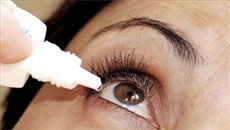What is Cardiovascular Disease (CVD)?
Cardiovascular disease (CVD) includes diseases of the heart and all blood vessels in the body, but most importantly those blood vessels leading to the brain and the heart itself. When there are problems with the blood vessels to the brain, oxygen supply to the brain can be restricted or stopped, and this is called a stroke. When there are problems with the blood vessels to the heart, oxygen supply to areas in the muscle of the heart can be restricted or stopped and this may be called angina or heart attack.
Bad news and good news
The bad news is that research has shown that people of South Asian origin have an increased risk for high blood pressure (hypertension) and diabetes and they face greater risk for CVD than the general population.1 As well, people of South Asian origin have a greater likelihood of serious complications and death when they get CVD.2 Because South Asians have not been well represented in research about CVD, prevention and guidelines for early treatment may not meet their unique needs.
The good news is that while it is generally accepted that South Asians have a genetic tendency to be at risk for CVD, some experts feel that lifestyle is accountable for much of the risk.4 For this reason, health care professionals need to get the word out about promotion of cardiovascular health in ways that work for the South Asian culture. You, and the health care professionals that care for you, need to know about special considerations for CVD screening and prevention.
Research to make a difference
The Canada-India Networking Initiative conference, held in Surrey B.C. in 2010, brought experts together to find solutions to the increasing burden of CVD in Canada and India. According to Douglas Todd, columnist for The Vancouver Sun, the Newton area of Surrey was “among the largest South Asian diaspora communities on the planet — second only to enclaves in London.”
I am a registered nurse and teacher of pathophysiology (the study of diseases) at Kwantlen Polytechnic University. After attending the conference, I felt compelled to raise awareness among my students about the unique risks for CVD faced by South Asian people.
Did the students in my pathophysiology classes know about the unique risks for CVD faced by South Asian people and the special health promotion approaches needed? I made plans to carry out ‘action research’ in the Bachelor of Science in Nursing (BSN) program.
Basically, ‘action research’ is carried out by asking if a problem exists, planning and carrying out a solution to the problem if it exists, then seeing whether the solution worked. Interestingly, over half of the nursing students that participated in the research self-reported as South Asian.
It was shown that students were unaware of the unique CVD risks for South Asian people. To solve this, I added additional information called ‘South Asian Considerations,” in the already existing sections of the course covering hypertension, diabetes and acute and chronic CVD.
Health promotion
My goal is to help South Asian people become aware of their unique health risks. In this section, I will discuss some of the material that the students covered. Much of the information came from articles in specialized journals or from the expert presentations at the Canada-India Networking Initiative conference. Resources are listed at the bottom of this article.
Smoking, obesity, diabetes, high cholesterol and hypertension account for most of CVD risk worldwide. For South Asian people, the most important risks are obesity, hypertension, high cholesterol and diabetes.
Obesity, and in particular, abdominal obesity (more affectionately known as ‘belly fat’) increases the work on the heart and is a risk for CVD. South Asian people have a genetic tendency to store fat around their middle.5 As well, obesity contributes to the development of Type 2 diabetes.
• Talk to your doctor about using measurements for abdominal obesity (either simple waist measurement or waist-to-hip ratio) as part of your CVD risk assessment.
• If you have extra fat around your middle, consider making lifestyle changes that you can stick with to gradually lose weight and then maintain a healthy weight
Hypertension, diabetes and high cholesterol can cause changes in your blood vessels that may result in blockages and extra work on the heart. The World Health Organization predicts that in next 20 years, prevalence of Type 2 diabetes in Canada will increase by 72 per cent and in South Asia by 150 per cent. It has been found that there is an increased rate of Type 2 diabetes, at younger ages and for both sexes, among South Asians.
• Learn about the early signs of Type 2 diabetes and if you have diabetes in your family, talk to your doctor about early screening and ways to decrease your risk.
• Have your blood pressure checked regularly, and start lifestyle modifications to address even mild hypertension early.
• Maintain a healthy weight, get enough exercise and watch the simple carbohydrates (like sugar and white flour), salt and fat in your diet. Salt causes the body to hold on to water, which raises blood pressure.
• If you have Type 2 diabetes, hypertensions or problems with your cholesterol, make sure you follow the recommended lifestyle modifications, including diet and exercise. If you are on medications, take those medications as prescribed and go for your regular checkups.
Dr. Justin Zaman, cardiologist and chair of the cardiovascular working group at the South Asian Health Foundation in the UK, suggested that the way food is prepared is as critical as the food itself, “Making a few changes to your ingredients or ways of cooking, such as reducing the amount of fat, salt and sugar you use, can make a big difference.”
The Heart and Stroke Foundation has a special South Asian section promoting ways to lower cholesterol and they also have ‘heart healthy’ recipe suggestions. There are cookbooks and other websites that have special recipes. The much-loved South Asian cuisine can be prepared in a ‘heart healthy’ way. You may find that you can cut the salt and simple carbohydrates in your beautifully spiced food without losing the taste.
• Reduce your overall fat intake and replace saturated fats, such as butter or ghee, with monosaturated fats, such as olive or canola oil. Try to completely cut out trans fats as they are bad for you.
• Eat more fruits, vegetables, and whole grains to help lower your total cholesterol.

From the Heart
By the end of the course, the students demonstrated that they had learned a great deal about ‘South Asian Considerations’ for CVD and health promotion. Discussion groups were formed and the students talked about the ways in which the information they learned might impact their nursing practice. There were some perceptive responses from the students. Most of the responses followed two general themes. As mentioned, over half of the participants self-reported as South Asian.
The first theme was that students appreciated a need for culturally sensitive family teaching across all ages to promote prevention. One student said “You will probably have to get the word out there in several different ways; you might have to get an interpreter and then involve the entire family.” Several students said that a good place to start would be in high school, for instance in cooking classes. As well, students commented that all teaching needs to be sensitive to cultural norms, South Asian cooking and possible language challenges.
On a personal note, one of the South Asian students shared “It is my mom that does the shopping and cooking. You need to teach her about how to change.” But in response to this, another South Asian student remarked “It is true that women are doing most of the cooking and women are going to bring about the change, but if the man doesn’t like the food, the woman is going to go back to making what he likes to eat.” Clearly, we need to get the word out to the whole family.
The second theme was that there is a need for public awareness as well as health care professional awareness regarding unique CVD risks in South Asian people. One student said “Now that I know this, I’m going to take a more careful look at my South Asian patients.” Another student explained that prior to learning about the unique risks for CVD in South Asian people, she would not have paid particular attention to risk factors like abdominal obesity and mild hypertension in say, a 40-year-old man admitted to the hospital for other reasons. With the knowledge gained about CVD risks in South Asian people, the student said that she would explain the risks to that patient and encourage him to see his physician.
On a practical note, one student remarked “People are taught to reduce this and reduce that but a lot of people don’t understand why. We need teaching so that people can understand why reducing salt affects the risk. My dad has hypertension and he has always been told to reduce his salt intake so he just says OK, whatever. I was sitting with him one day and I asked him why he thought they wanted him to reduce his salt intake and he didn’t really know.”
Closing Thoughts
I sincerely hope that you will take some of the suggestions for health promotion to heart. Learn more about the unique CVD risks for South Asian people and talk to your friends and families about health promotion. Like the students that I love to work with, you can take action!
References and resources
1. Heart and Stroke Foundation. (2010). South Asian resources. Retrieved from:
http://www.heartandstroke.com/site/c.ikIQLcMWJtE/b.3479045/k.6516/South_Asian_Resources.htm December 10, 2011
2. Chiu M., Austin P.C., Manuel D.G., & Tu J.V. (2010). Comparison of cardiovascular risk profiles among ethnic groups using population health surveys between 1996 and 2007. Canadian Medical Association Journal (CMAJ) 4. DOI:10.1503/cmaj.091676
3. Lip, G.Y.H., Barnett, A.H., Bradbury, A., Cappuccio, F.P., Gill, P.S., Hughes, E., Imray, C., Jolly, K., & Patel, K. (2007). Ethnicity and cardiovascular disease prevention in the United Kingdom: A practical approach to management. Journal of Human Hypertension, 21, 183-211.
4. Jeemon, P., Neogi, S., Bhatnagar, D., Cruickshank, K. J., & Prabhakaran, D. (2009). Special section cardiovascular diseases: The impact of migration on cardiovascular disease and its risk factors among people of Indian origin. Current Science, 97, 3.
5. Farquhar, J.W. (2010). A Critical Challenge to Achieve Global Health. Proceedings from the CINI 2010: Canada-India Networking Initiative on Cardiovascular Health. Surrey, BC
6. National Health Services [NHS] (2011). NHS Choices: Your Health, Your Choices. Retrieved from: http://www.nhs.uk/Livewell/SouthAsianhealth/Pages/10healthyeatingtips.aspx July 12, 2011
For more information, visit the following websites:
Heart and Stroke Foundation at heartandstroke.com (go to South Asian resources)
Canadian Diabetes Association at diabetes.ca
Canada-India Networking Initiative conference at thecini.org (follow the projects link for the conference presentations)
By Catherine Bock, RN, MAED
Faculty, BSN program, Kwantlen Polytechnic University
catherine.bock@kwantlen.ca






